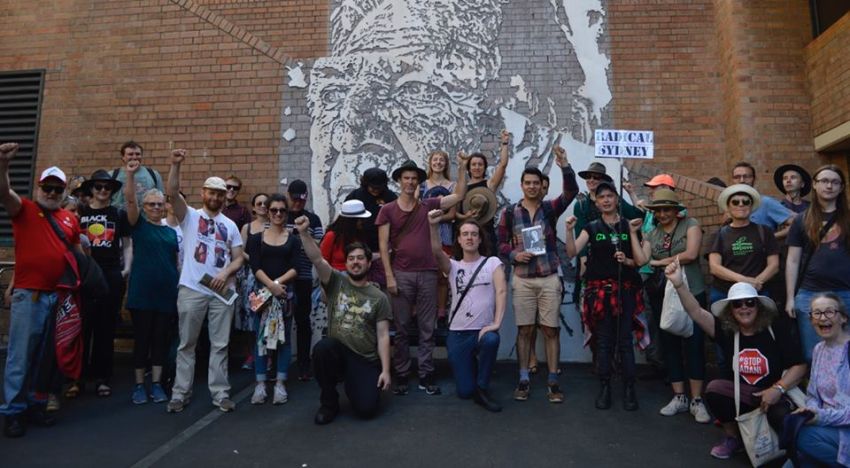
Key sites of radical struggle in Sydney’s history were included in a “Radical Sydney Walking Tour” conducted by historians Rowan Cahill and Terry Irving, and sponsored by Green Left Weekly, on April 13.
Some 60 people enjoyed an afternoon of revelations about the often forgotten progressive history of this city. Cahill and Irving are labour historians at Wollongong University and are co-editors of the highly informative book Radical Sydney.
Starting at First Fleet Park in Circular Quay, the tour traversed The Rocks area, then walked around the harbour to Customs House, finishing at the Henry Lawson statue in The Domain.
Cahill and Irving began by noting that the first revolts in colonial Australia included not only early Aboriginal resistance, but also strikes by convicts and a developing working class.
Cahill explained that central Sydney was the site of a mutiny by Australian diggers in 1916, who were protesting poor pay and conditions during the increasingly unpopular World War 1.
The tour stopped at a mural of former NSW Builders Labourers Federation leader Jack Mundey, who co-led the Green Bans movement of the early 1970s. The Green Bans saved large parts of historic Sydney from developers’ bulldozers.
At Observatory Hill, Cahill and Irving recounted the revolt of Irish convicts at Castle Hill in 1804, during which they seized arms, intending to take over ships to sail back to Ireland. They were eventually defeated at the Battle of Vinegar Hill and subjected to brutal punishment as a warning to others.
Overlooking the “Hungry Mile” area, now Barangaroo, Cahill and Irving explained the militant history of the Waterside Workers Federation on Sydney’s docks. They stressed that the area had been a centre of struggle for workers’ rights, as well as a range of other radical social changes since the 19th century.
The next stop was the famous sandstone church in Millers Point, which was the site of the original struggle for an eight-hour work day. Stonemasons at the church went on strike and won a world-first eight-hour day. This was followed by the successful broader campaign in Melbourne for an eight-hour day for wider sections of the workforce.
Other stops on the tour were: at Dawes Point, named after Lieutenant William Dawes, who authored a dictionary of the local Aboriginal language in the late 18th century; at one of the many sites of radical speakers’ corners during the 19th and 20th centuries; and at Customs House, which had been originally constructed as a result of agitation by unemployed workers in the 1840s.
The final stop was at the statue of poet and radical author Henry Lawson in The Domain. Cahill quoted Lawson’s famous poem, Freedom on the Wallaby, written during the Great Shearers’ Strikes of the 1890s.
Cahill said the statue should have included Lawson’s mother, Louisa, who was a poet, writer, publisher, suffragist and feminist. Louisa founded and edited The Dawn, Australia’s first journal produced solely by women, which was distributed throughout Australia and overseas. Cahill said Lawson should rightly have been depicted holding the red flag of the workers’ movement, rather than standing rather coyly clutching paper.
Attendees proclaimed the Radical Sydney Walking Tour a great success and began planning another to explore other aspects of the city’s little-known history of militant and progressive struggle.
[More photos can be found here.]